The Manuscript
The Manuscript
The Barbados diary had deteriorated seriously before it was silked and mounted at the Library of Congress; there is evidence that some of the preliminary pages were already missing when Jared Sparks used it in the early nineteenth century. Transcribing it according to conventional standards would result in a confusing array of blank spaces enclosed by brackets and many speculative footnotes. The editors feel it can best be presented in facsimile, accompanied by the gloss that follows.
- Pages 38–39
- Fragments of what apparently are two of the first leaves in the blank book that GW used for his diary. They are in about the same condition as they were when Toner’s publisher set them in type in 1892.
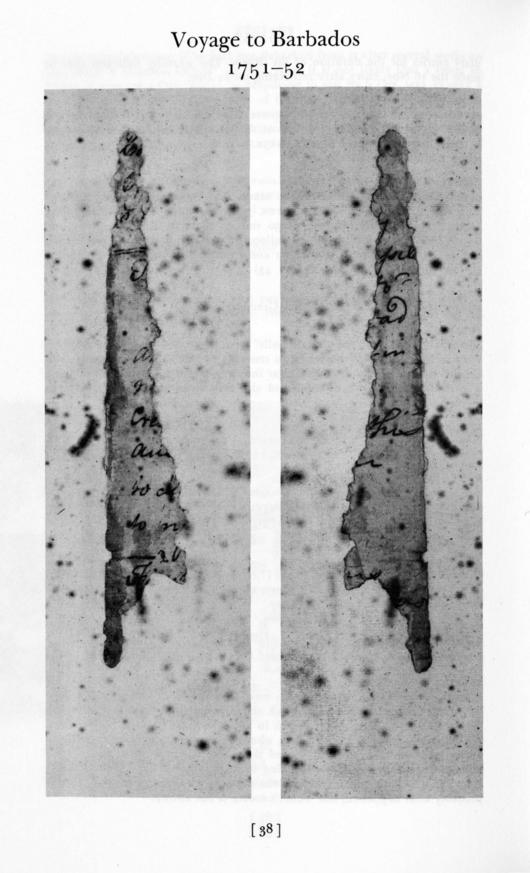
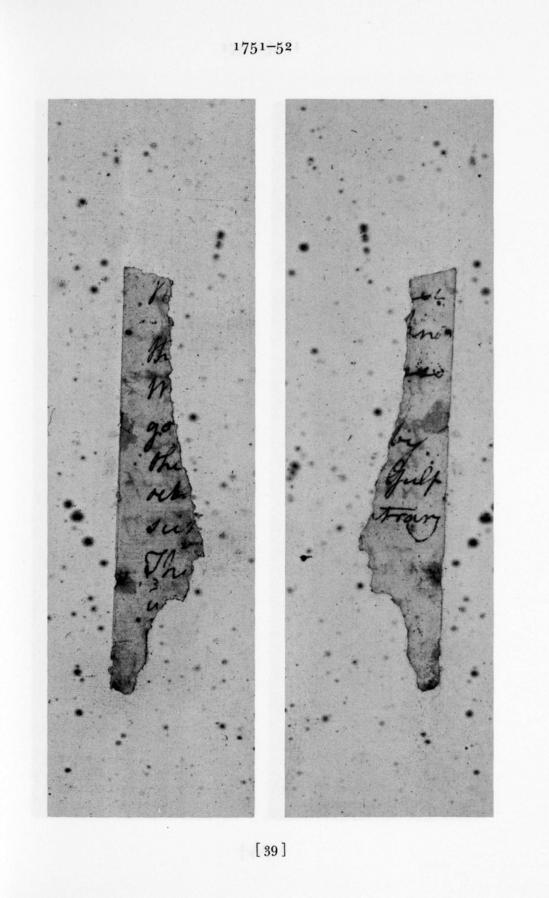
- Page 40
- REMARKS FOR SATERDAY 28TH: Assuming this to be the first entry in GW’s log and that he began the log on his first day out, we have an accurate date for the beginning of the voyage, 28 Sept. 1751. The second fragment, on the reverse side of the leaf is for 29 Sept.
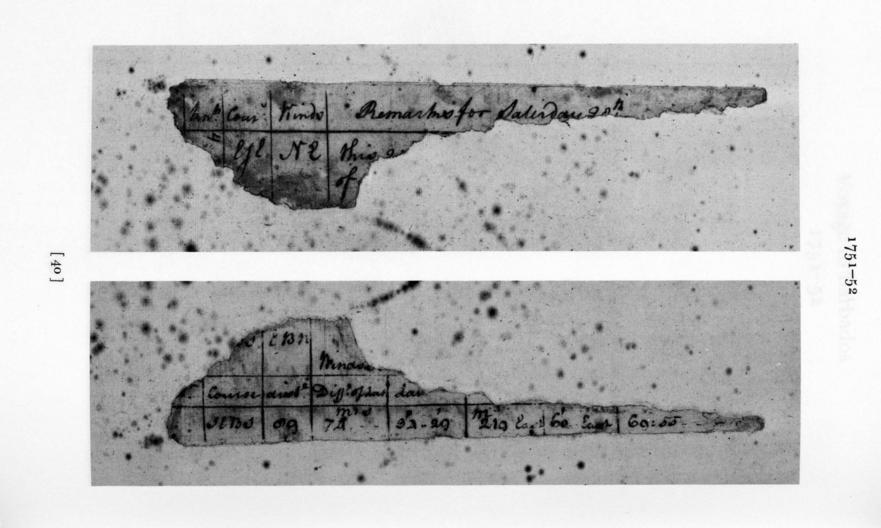
- Page 43
- I SUPPOSE THIS TO BE A FRAGMENT: A comment in the hand of Jared Sparks, as is the date of Oct. 1751. If Sparks wrote on the first full page available to him, it is likely that the earlier pages were mutilated when he saw them about 1827.
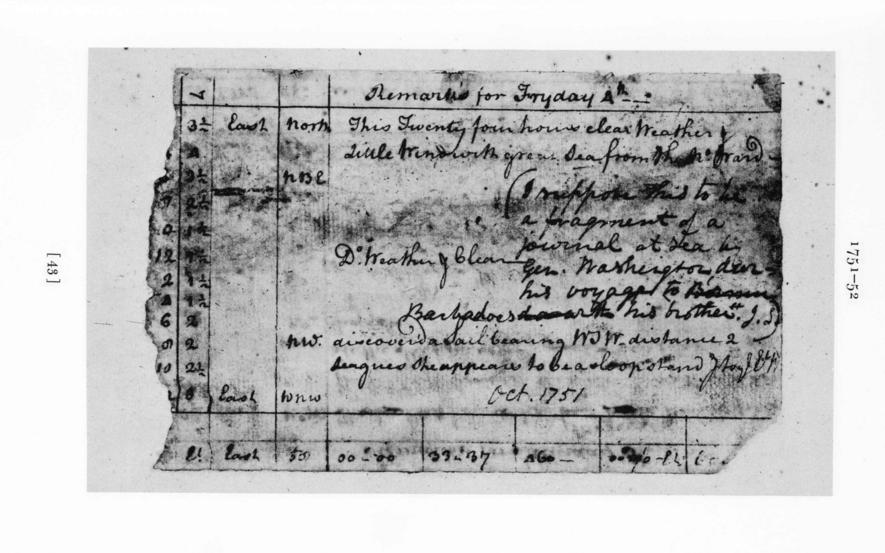
- Page 44
- For the first time, GW’s labels for the bottom line of data are readable, including departure, course, distance, difference of latitude, latitude, meridian distance, difference of longitude, and longitude. His indication of the mariner’s term departure is usually mutilated but would always be a two-digit figure expressing nautical miles.
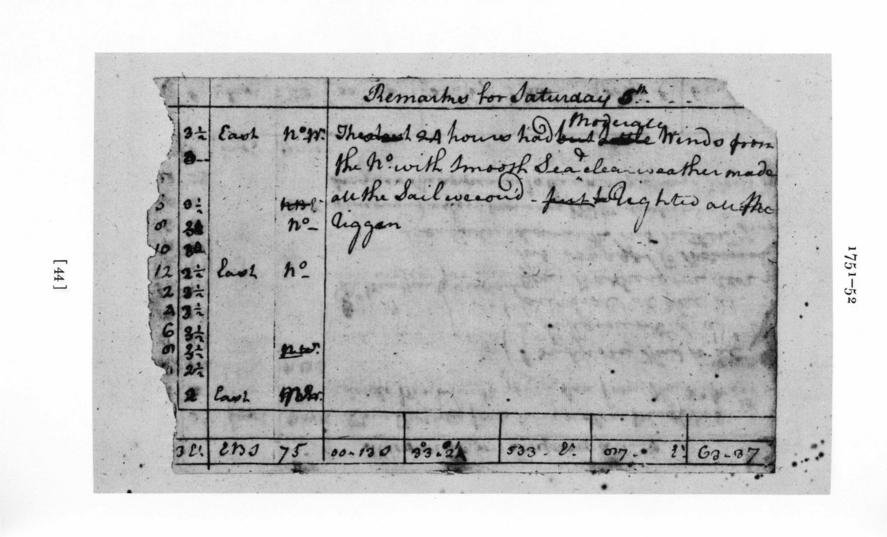
- Page 71
- With a landfall on the morning of [2] Nov., GW terminates his log. One or more leaves are missing at this point; presumably 2 Nov. was spent in entering Carlisle Bay and getting ashore at Bridgetown.
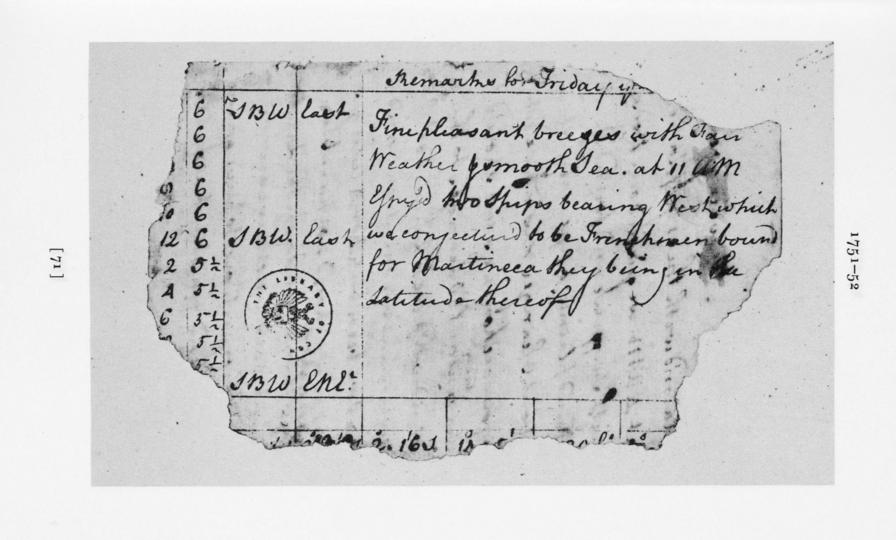
- Page 73
- The entries for 4 and 5 Nov. are from , 2:424, and are misdated. Correct dates are 3 and 4 Nov. The Gedney Clarke town house where the Washingtons dined was on the north bank of a creek that emptied into the careenage, near the old bridge which gave the town its name (, 2n).
- Page 74
- TUESDAY 6TH: He means the 5th. GW’s use of dates is erratic during his stay on the island; he will be one day ahead of the calendar until the temporary interruption of his entries on “17th” Nov., actually the 16th. THE [S]CHOONER FREDERICKSBURG, CAPTN. ROBINSON: The square-sterned sloop Fredericksburg, Cornelius Robertson, 80 tons, 6 guns, 8 men, registered at Williamsburg Oct. 1750; owner John Champe & Co. Lading: 3,300 bushels of corn, 70 bushels of oats, 17,000 shingles. The vessel cleared the port of Rappahannock 2 Sept. 1751 (P.R.O., C.O.5/1444, f. 118, Naval Office Accounts). While it is possible that the Washingtons went to Barbados aboard this vessel, there are two reasons for doubt. GW probably would not have listed it so formally, including
the captain’s name, if he had just debarked from it after several weeks on the “fickle & Mirciless Ocean” (p. 69). Also, it is not likely that a vessel arriving in port on 2 Oct. would be preparing to sail by 6 Oct. MRS. CLARKE & MISS ROBTS.: Mrs. Mary Clarke, wife of Gedney Clarke, and her niece Elizabeth Roberts. TO COME & SEE THE SERPTS. FIR’D: Serpents, or fireworks discharged in commemoration of Guy Fawkes Day, 5 Nov. This remark enables us to correct the dating of the diary entries made during this period.
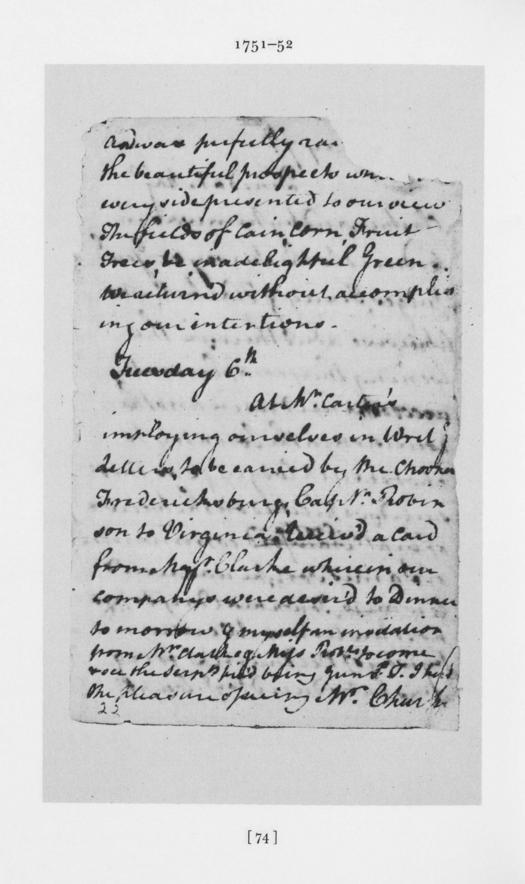
- Page 75
- THE SURVEYOR GENL.: William Patterson. JUDGES FINLEY & HACKET: Thomas Finlay and Othniel Haggatt. JAMES FORT: A fortification on the northern point of the entrance to Carlisle Bay and Bridgetown.
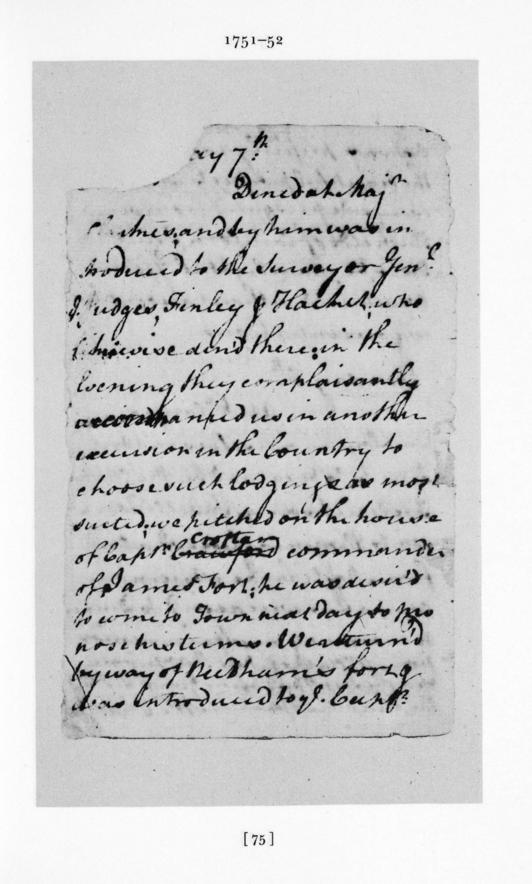
- Pages 77–79
- GW has extended his entry for “Fryday 9th,” actually 8 Nov., to cover the following Saturday.
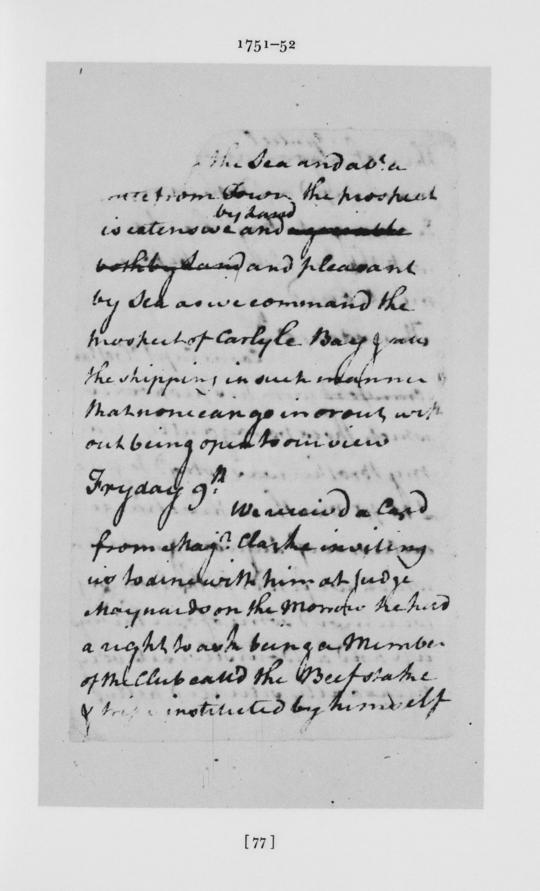
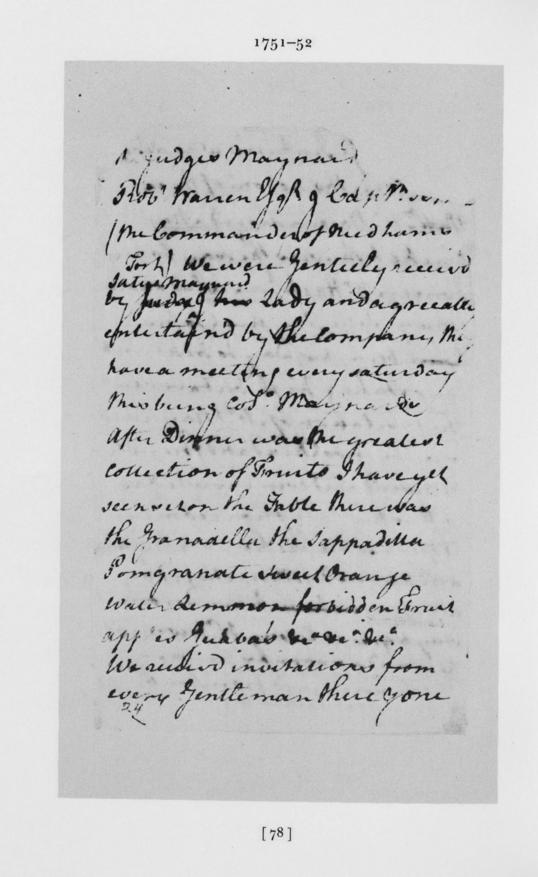
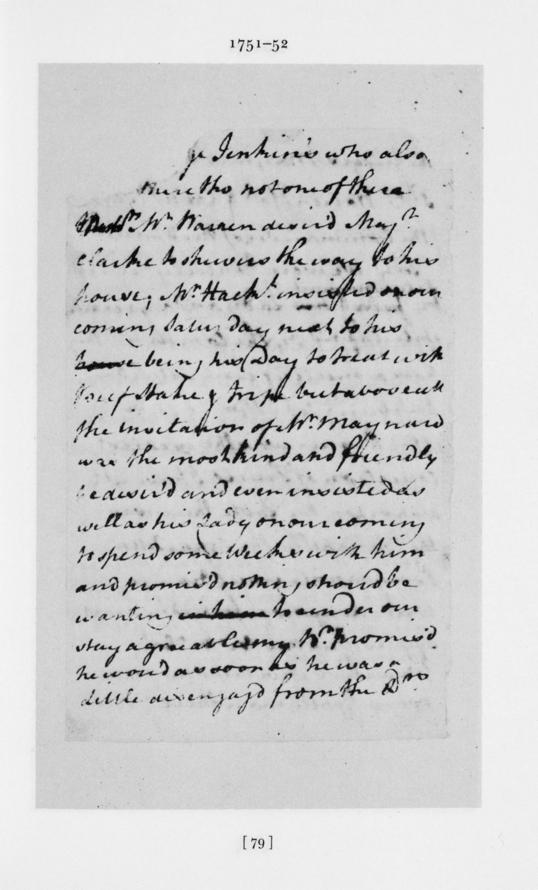
- Page 82
- MR. GRAEME . . . OF THE MASTER’S OF THE COLLEGE OF VIRGINIA: John Graeme. STRONGLY ATTACKED WITH THE SMALL POX: On 16 Nov., GW suspended his
diary entries for the duration of his illness. The wording indicates that he made the 16 Nov. entry after recovering on 12 Dec.
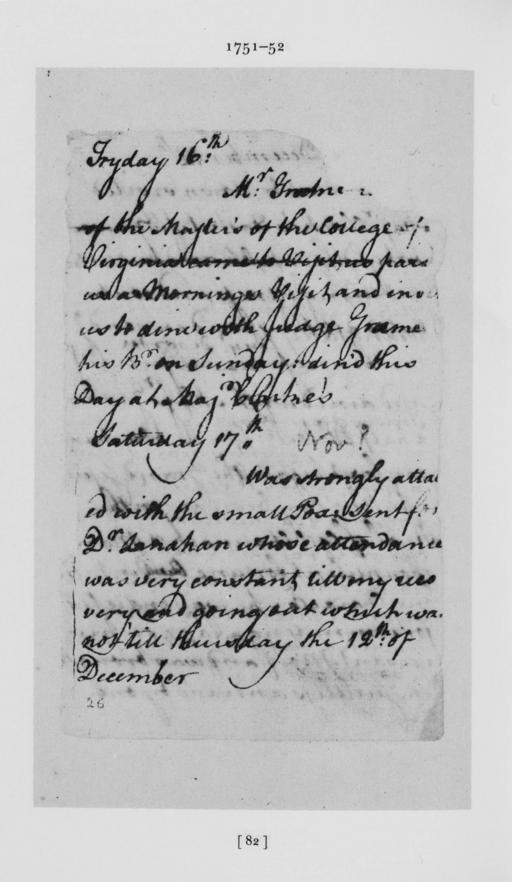
- Page 83
- DECEMBER 12TH: GW’s dates will square with the calendar until he assigns both Monday and Tuesday the date of 16 Dec.; then, by skipping from 19 to 21 Dec., he will again be correct. MAJR. GASKENS: John Gaskin. COLO. CHAUNACK: Benjamin Charnock.
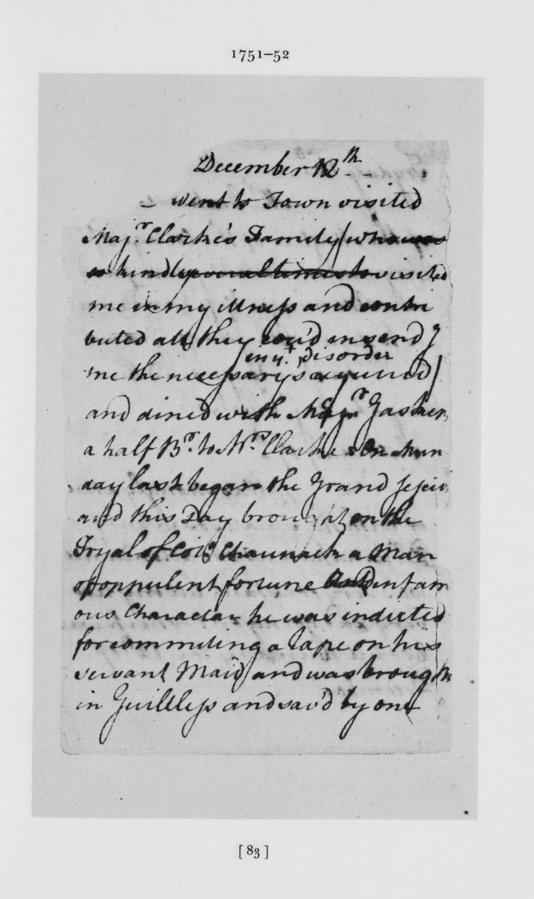
- Page 85
- GENERAL BARRACK: William Barwick. MESSRS. STEPHENSON’S MERCHT.: Thomas Stevenson & Sons. THE INDUSTRY CAPTN. JOHN SAUNDERS: The Industry, John Sandars, a square-sterned brig of 50 tons, 7 men, of Bristol registry and owned by Sandars. Lading: 1,230 gallons of rum. Sandars gave bond at the Barbados customs office 19 Nov. 1751 and entered the York River of Virginia 30 Jan. 1752 (P.R.O., C.O.5/1444, f. 43).
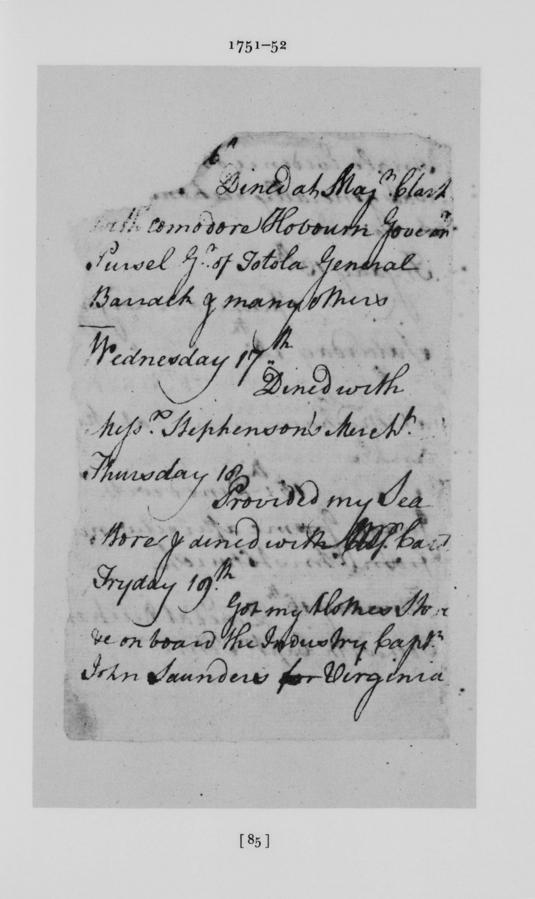
- Page 86
- THE GOVERNOR OF BARBADO’S: Henry Grenville.
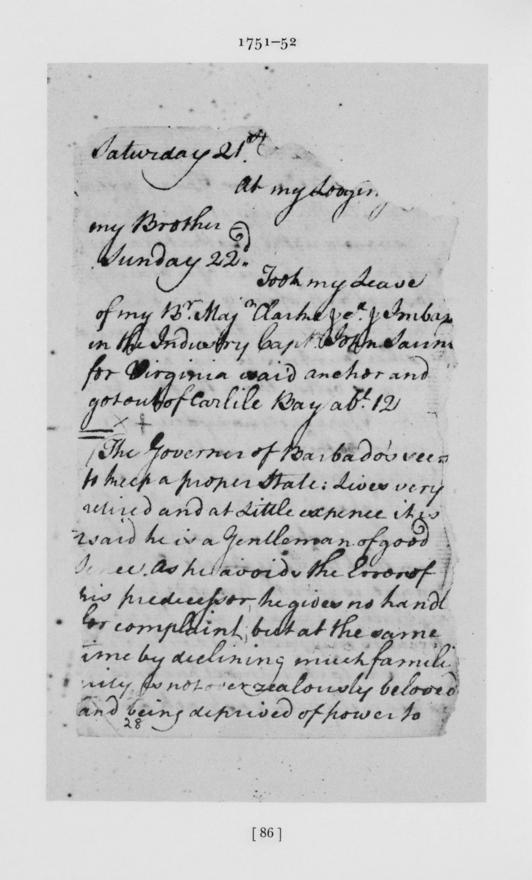
- Page 88
- 40 TO 70 POLLS: Both “polls” and “bolls” have been used as units of measure, but it is likely that GW neglected to cross his t’s and here means “potts.” In the literature of the West Indies sugar industry, a pot is often used to denote a batch or boiling-down of sugar and also may mean a quantity equaling a hogshead.
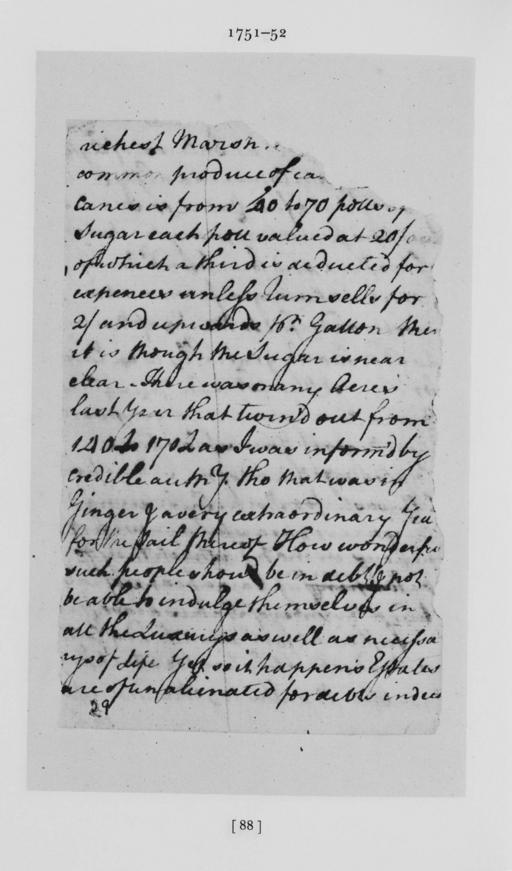
- Page 89
- GUNIA CORN: Guinea corn, a grain sorghum. , 254, says it was mainly used to feed slaves, each receiving from a pint to a quart a day.
- Page 104
- A SLOOP CALLD THE GLASGOW: The Glasgow, Matthew Stroud, a square-sterned sloop of 40 tons, 7 men, built in Virginia in 1750, owner Andrew Sprowle. She cleared Port Hampton 18 Oct. 1751, bound for St. Kitts (P.R.O., C.O.5/1446, f. 53).
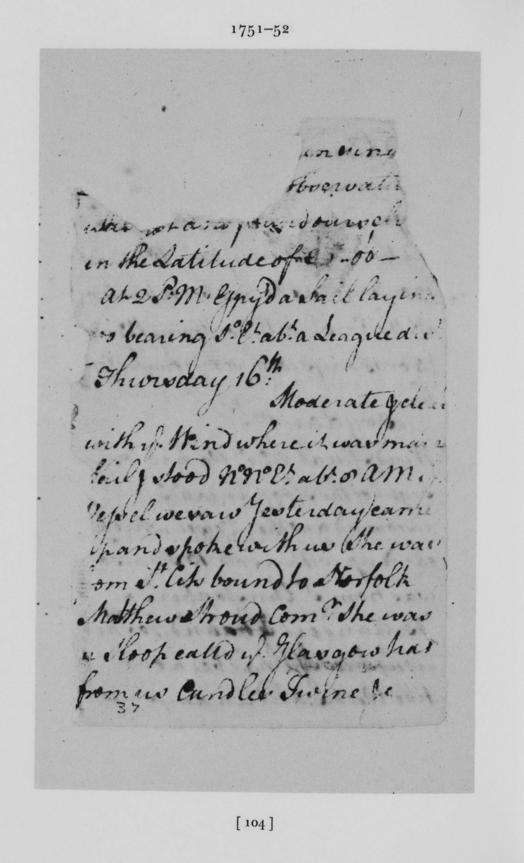
- Page 113
- MOUTH OF YORK RIVER: 29 Jan. 1752. The Naval Office record showing the arrival 30 Jan. was probably made when the captain checked in with the customs officer in Yorktown the next day.
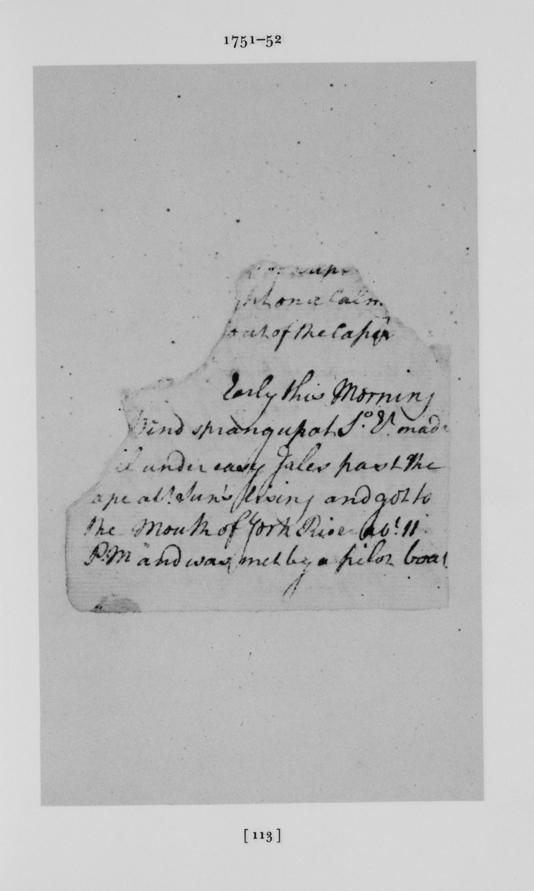
- Page 115
- GREAT MAIN: Refers to a cockfight in Yorktown, where GW returned after his interview with Governor Dinwiddie. Colonel Lewis is John Lewis of Warner Hall.
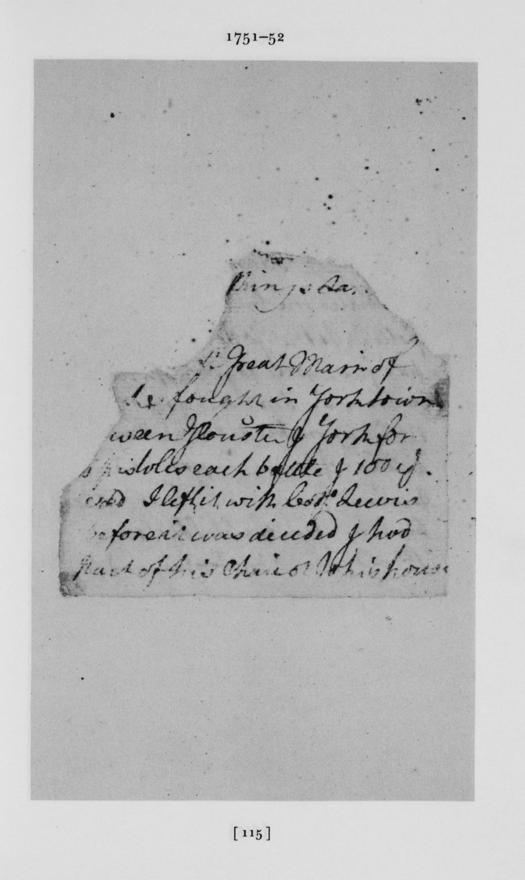
- Page 116
- MONDAY 3D: He went to Hobbs Hole, now Tappahannock. TUESDAY 4TH: Layton’s ferry was on the Rappahannock about 20 miles above Tappahannock. This crossing would have placed him in Westmoreland County, not far from the old family home at Pope’s Creek where his brother Augustine then lived. , 77n, says that GW “rested there that day and night, and procuring a horse, proceeded in the morning to his mother’s, near Fredericksburg. Here he tarried one night, and rode the next day to Mount Vernon.” That is probably what happened, but Toner’s source is not known.
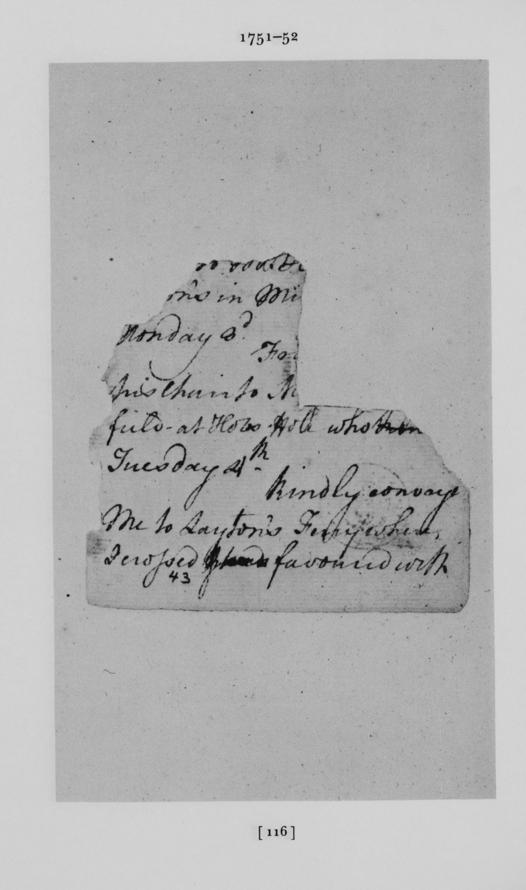

![University of Virginia Press [link will open in a new window] University of Virginia Press](/lib/media/rotunda-white-on-blue.png)
